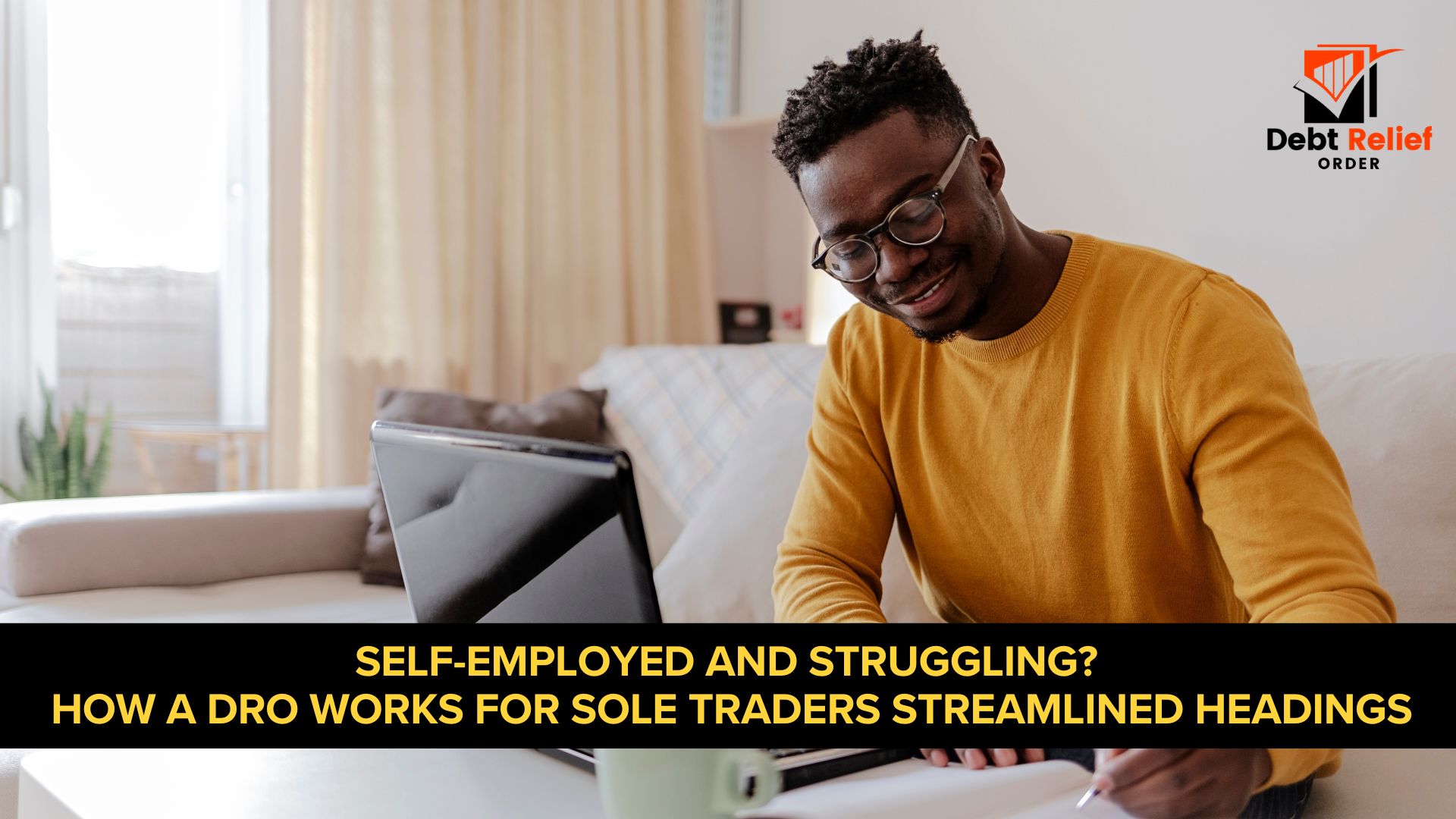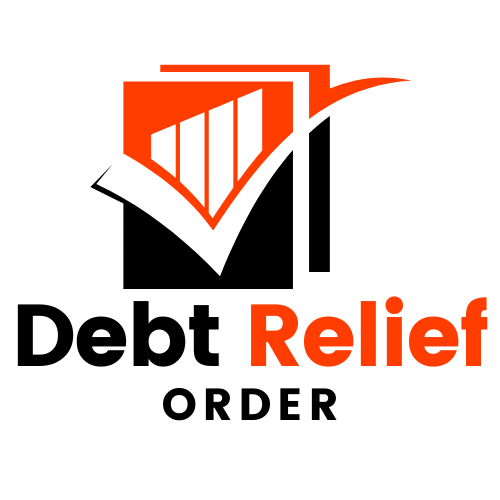
You should consider a Debt Relief Order if you are a sole trader with low income, low assets, and unmanageable debts. A DRO can pause enforcement, stop interest, and write off qualifying debts after twelve months. It is designed for simple cases where bankruptcy feels too heavy and an IVA is not realistic. An approved intermediary guides the process, so you are not alone. With that context, let’s define what a DRO means in plain English for a small business owner.
What is a Debt Relief Order (DRO) for sole traders in plain English?
A Debt Relief Order is a formal debt solution that freezes qualifying debts for twelve months and then writes them off if your situation stays the same. It applies to people in England and Wales who meet set limits for debt level, assets, and disposable income. A DRO is handled online with the Insolvency Service through an approved intermediary rather than the court. Your creditors cannot chase you while the order is in place. Knowing the basics helps you check if you meet the rules.
Am I eligible for a DRO if I’m self-employed and what are the key rules?
You are eligible if your total qualifying debt is within the current DRO limit, your assets are below the asset cap, and your disposable income is very low after reasonable living costs. You must live or run your business in England or Wales and not have had a recent DRO. You cannot be in another formal insolvency like bankruptcy or an IVA at the same time. Honesty about income, expenses, and assets is essential because checks can be made. Once eligibility is clear, it helps to know which debts can go in.
Which debts can go into a DRO and which are excluded (HMRC, utilities, suppliers, fines)?
Most unsecured debts, such as credit cards, overdrafts, personal loans, council tax arrears, utility arrears, supplier invoices, and some HMRC debts, can go into a DRO. Certain debts, like student loans, court fines, and maintenance arrears, are excluded and will still need handling. You should list every qualifying creditor so that collections are paused across the board. If you are unsure about a specific HMRC liability, the intermediary will confirm treatment. After debts, assets are the next key test.
What counts as “assets” for a sole trader and can I keep my tools or vehicle?
Assets include cash, stock, savings, vehicles, and valuable items you own, but everyday household goods are normally ignored. Tools of the trade and a modest vehicle you need for work may be protected within set limits. You must disclose anything you own or share because sales, transfers, or gifts can be reviewed. Keep receipts and sensible valuations so the asset figure is accurate. With assets recorded, the focus moves to disposable income and trading.
How is “disposable income” worked out when I’m self-employed and can I keep trading?
Disposable income is worked out by taking your average business income and subtracting tax, National Insurance, business costs, and reasonable household expenses. If the figure left each month is very low, you may pass the DRO income test. You can usually keep trading as a sole trader, but there are rules about using your name and obtaining credit. Keep simple accounts and bank statements so your position is clear. When the numbers add up, you can start the application.
How do I apply for a DRO?
You apply through an approved intermediary who checks your details, uploads documents, and applies to the Insolvency Service. You will need photo ID, bank statements, business records, bills, and a full list of creditors with balances. There is a small fee for the DRO, which some charities can help you to fund. Your intermediary will explain timelines and what to expect after submission. With the file complete, timing becomes the next question.
How long does approval usually take, from first chat to decision?
Approval often takes a few weeks from the first advice session if your paperwork is ready. Delays usually come from missing statements or unclear balances. Your intermediary will keep you updated by phone or email as the case moves forward. Creditors are informed once the order is made, and collection should stop. After approval, you should understand the restrictions.
What restrictions will I face during a DRO (credit limits, banking, trading names, guarantor/joint debts)?
You must not obtain credit over the set limit without telling the lender you are in a DRO, and you must follow rules about trading names. Company directorship is restricted, and you should not act in ways that could harm creditors. Guarantor debts and joint debts can still affect the other person even if you are protected. Keep your bank informed so accounts remain stable for day-to-day use. Banking details matter because many sole traders rely on business accounts.
Will a DRO affect my tenancy, commercial lease, insurance, or business banking/overdraft?
A DRO may affect a business overdraft because the bank can remove facilities linked to personal credit. Most residential tenancies continue, but rent arrears included in the DRO may change how a landlord views risk. Commercial leases and insurance policies should be checked so that terms remain valid. You should keep payments for ongoing essentials up to date to show stability. Once arrangements are steady, you can think about enforcement and court action.
What happens to enforcement, CCJs, and bailiffs once a DRO is made?
Once a DRO is made, creditors included in the order must stop enforcement and contact. County Court Judgments relating to those debts are covered, and enforcement, such as bailiff visits, should cease. You should keep a copy of the DRO notice to show any agent who calls in error. Tell your intermediary if contact continues so they can follow up. With pressure eased, consider your longer-term credit file.
How will a DRO impact my credit file and access to finance, during and after?
A DRO is recorded on your credit file for six years and will make borrowing difficult during that time. You can still use basic bank accounts and build small positive markers like paying mobile bills on time. After the six-year mark, the DRO falls away, and you can keep rebuilding with careful use of credit. Lenders will look for stable income and sensible account conduct. If your situation changes during the twelve months, you must report it.
What if my income rises, I get a windfall, or my assets change, can a DRO be refused or revoked?
A large rise in income, a cash gift, or a new asset can change your eligibility and may lead to the DRO being refused or revoked. You should tell your intermediary at once so they can advise on options. Sometimes a modest change does not alter the outcome, but hiding changes can cause serious problems. Keep records of any one-off payments so they can be explained. If a DRO no longer fits, alternatives may be better.
What are the main alternatives to a DRO (IVA, bankruptcy, DMP, HMRC Time To Pay) and when are they better?
An IVA suits higher debts and steady income, bankruptcy suits a clean break where assets are limited, and a DMP is useful for flexible, informal repayments. HMRC Time To Pay can spread tax arrears for self-assessment or VAT, where you can afford monthly sums. Each option has its own costs, risks, and time frames. Compare outcomes for your business cash flow and personal credit file. Jurisdiction also matters if you are not in England or Wales.
Do the rules differ in Scotland or Northern Ireland and what should I know?
Yes, Scotland uses tools like the Minimal Asset Process bankruptcy and the Debt Arrangement Scheme, while Northern Ireland has its own DRO system and criteria. Limits, fees, and processes differ by nation. You should seek advice from a local debt advice body if you live there. Clear local guidance avoids wrong forms and delays. After choosing the right route, it helps to plan recovery.
What happens after 12 months, am I discharged, and what should I do next?
After twelve months, most qualifying debts in the DRO are written off, and you are discharged. Keep simple accounts, file tax returns on time, and rebuild your budget. A basic emergency fund and a clean business account help prevent repeat problems. Small steps like saving for VAT and keeping receipts make a big difference. With discharge complete, you may also want ongoing support.
Where can I get free, confidential debt advice?and what extra help is there if I’m vulnerable?
You can get free, confidential advice from national debt charities and local advice centres that understand self-employed income. Many offer phone and online support with budget tools and creditor letters. Extra help is available if you have mental health or other vulnerabilities that affect money management. Tell your adviser so they can tailor communication and time scales. If you prefer a full setup service, you can ask a specialist to handle the debt relief order paperwork for you to make the process easier and stress-free.
Can Debt Relief Order (our service) set up my DRO and support my business in the future?
Yes, Debt Relief Order can prepare your DRO, check eligibility, and manage the application with an approved intermediary. We help gather documents, list creditors, and explain how assets and disposable income are assessed. We also support simple business budgets and signpost HMRC Time To Pay where it helps. Updates are clear, so you know what happens next. With support in place, you can move to a sensible conclusion.
What is the simplest next step if I’m a self-employed person in debt?
The simplest next step is to list your creditors, total balances, monthly income, and essential expenses so you can see if a DRO fits. If your assets are modest and your disposable income is very low, a Debt Relief Order can give fast protection and a fresh start after twelve months. If your income is higher or your assets are above the limit, an IVA, bankruptcy, or a Time To Pay plan may be better. Free debt advice and an approved intermediary will confirm the right route and keep the process on track. With clear facts and steady help, a sole trader can reduce pressure, protect the business, and rebuild with confidence.
